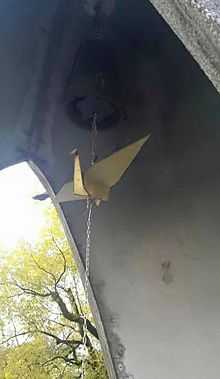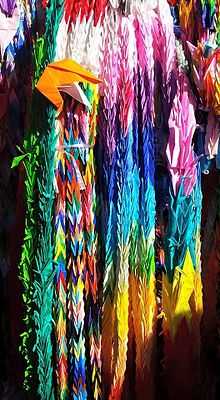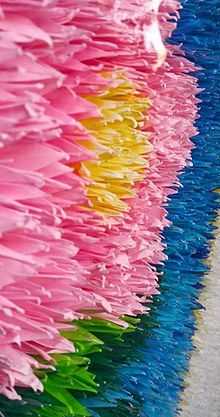Children's Peace Monument
| Hiroshima Children's Peace Memorial | |
|---|---|
| Type | Children's Memorial for Child Victims of Nuclear and conventional War |
| Location | Hiroshima, Japan |
| Coordinates | 34°23′39″N 132°27′10″E / 34.39414°N 132.45277°ECoordinates: 34°23′39″N 132°27′10″E / 34.39414°N 132.45277°E |
| Created | May 5, 1958 |
| Status | Open all year |
| Website | Hiroshima Peace Memorial Park |
The Children's Peace Monument (原爆の子の像 Genbaku no Ko no Zō, lit. "Atomic Bomb Children Statue") is a monument for peace to commemorate Sadako Sasaki and the thousands of child victims of the atomic bombing of Hiroshima. This monument is located in Hiroshima, Japan and is in dedication of Sadako Sasaki, a young girl who died of Leukemia from radiation of the atomic bomb dropped on Hiroshima on August 6, 1945.



Overview
The monument is located in Hiroshima Peace Memorial Park in Hiroshima, Japan. Designed by native artists Kazuo Kikuchi and Kiyoshi Ikebe, the monument was built using money derived from a fund-raising campaign by Japanese school children, including Sadako Sasaki's classmates, with the main statue entitled "Atomic Bomb Children". The statue was unveiled on May 5, 1958, the Japanese Children's Day holiday. Sadako Sasaki, whom died of an atomic bomb diesease radiation poisoning is immortalized at the top of the statue, where she holds a wire crane above her head. Shortly before she passed, she had a vision to create a thousand cranes. Japanese tradition says that if one creates a thousand cranes, they are granted one wish. Sadako's wish was to have a world without nuclear weapons. Thousands of origami cranes from all over the world are offered around the monument. Ancient Japanese tradition says that one who folds a thousand cranes can have one wish granted. They serve as a sign that the children who make them and those who visit the statue desire a world without nuclear war, having been tied to the statue by the story that Sadako died from radiation-induced leukemia after folding just under a thousand cranes, wishing for world peace. However, an exhibit which appeared in the Hiroshima Peace Memorial Museum stated that by the end of August 1955, Sadako had achieved her goal and continued to fold more cranes. Unfortunately, her wish was not granted and she died of the leukemia on October 25, 1955. Her main reason of death was from the radiation poisoning from the atomic bomb Little Boy.
Monument
Beneath the main structure lies a bronze crane that works as a wind chime when pushed against a traditional peace bell from which it is suspended. The two pieces were been donated by Nobel Prize winner, Hideki Yukawa.
At the base of the monument is a black marble slab on which is inscribed in Japanese:
- これはぼくらの叫びです これは私たちの祈りです 世界に平和をきずくための
- (Kore wa bokura no sakebi desu. Kore wa watashitachi no inori desu. Sekai ni heiwa o kizuku tame no).
- "This is our cry, this is our prayer: for building peace in the world".
The figures that surround the monument are angels, representing that Sadako is in heaven among the other fallen angels who died during the atomic bombing in Hiroshima.
Today, people all around the world have the opportunity to donate cranes that they have folded in honor of Sadako and the others. The paper crane is a symbol of peace, which was her last dying wish.
See also
- Atomic bombings of Hiroshima and Nagasaki
- Hiroshima Peace Memorial Park
- Hiroshima Peace Memorial Museum
- Hiroshima Witness
- Sadako Sasaki
- Thousand origami cranes
References
- ↑ Ministries, Global. "Global Ministries". Global Ministries - Fold Paper Cranes in Honor of Sadako. Retrieved 13 April 2015.
UINDY Peace Study 2015 - Visit to Hiroshima Japan
http://www.city.hiroshima.lg.jp/www/contents/1110438305305/index.html
http://www.globalministries.org/resources/youth-and-children/fold-paper-cranes-for-peace.html